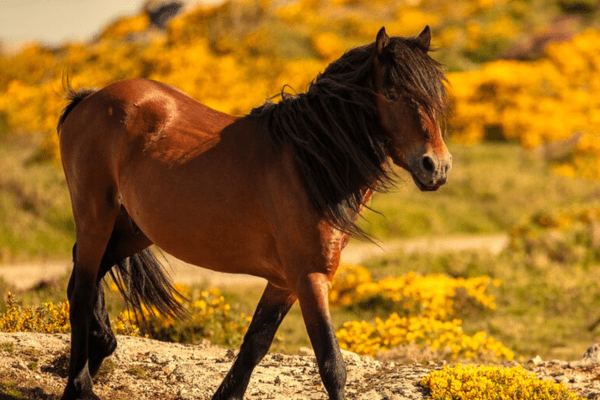The Galician Horse, a breed of relatively modest stature, hails from Galicia in Spain’s northwestern corner. Renowned historically for their versatility and resilience in battlefields and agricultural fields alike, today this breed serves a dual purpose – contributing meat production while offering unique equestrian experiences for tourists – continuing its legacy of versatility and resilience.
History:
The Galician Horse, commonly referred to locally as ‘Gallego,’ boasts an intricate history and culture deeply intertwined with Iberian history and culture. Not only is its story about one horse breed alone; rather it encapsulates both historical and geographical context of Galicia where this breed calls home.
Celtic Origins:
The Galician Horse’s story begins during the 6th century BC when Celtic immigrants settled northern Iberia. Along with them came small dark-colored horses adept at traversing its varied terrain.
These early settlers can be considered the forebears of modern Galician Horses, adapting and prospering under Galicia’s unique environmental conditions.
Medieval Significance:
By the Middle Ages, Galician Horses had become renowned for their durability and adaptability in Galicia’s mountainous terrains.
At the border between Galicia and Castile, these horses were in high demand, often exchanged or leased as evidence of their superior suitability for local terrain over other horse breeds.
20th Century Challenges:
The latter part of the 20th century, particularly the 1980s and 90s, presented Galician horses with new challenges.
The introduction of meat production stallions from other breeds posed a potential threat to the genetic purity of the breed.
Concerns were expressed over the potential degradation of Galician Horse’s unique genetic heritage, prompting action by conservationists and local communities alike.
Conservation Initiatives:
Recognizing the danger of genetic dilution, Galicia’s regional government initiated a conservation plan in 1993.
This plan marked the commencement of an active effort to preserve and protect the breed’s unique qualities and lineage.
Formation of Asociacion Pura Raza Cabalo Galego in 1997 furthered these efforts, and one year later the breed gained formal recognition and an official studbook was created – both essential steps toward safeguarding its future.
Current Status and Protection Measures:
Today, the Galician Horse enjoys protected status under the Galician government and efforts are directed at not only protecting its genetic makeup but also increasing population numbers in its wild form.
Conservation and protection efforts recognize not only its breed-specific significance, but also as an icon of cultural heritage.

Characteristics and Appearance:
Galician horses are small to medium-sized horses that typically stand 12-13.2 hands high. Their robust yet compact builds feature well-proportioned heads, strong necks and sturdy legs; with bay, black, chestnut or grey coat colors; thick manes and lush tails adding rustic charm.
Temperament and Behavior:
Galician horses are well-known for their friendly demeanor, making them great companions for both adults and children.
Intelligent, willing to learn and adaptable characteristics make these horses suitable for various equestrian activities; yet their smaller stature allows them to navigate Galicia’s rugged terrain effortlessly.
Uses and Activities:
Once restricted solely to agricultural work, Galician Horses have since found many uses beyond agriculture.
Today they excel in endurance riding, light draft work and therapeutic riding programs; their agility and temperament also make them great candidates for lower level dressage and show jumping competitions.

Conservation and Cultural Significance:
The Galician Horse is more than just a breed; it represents Galician heritage. Recently, there has been increased interest in conserving this breed due to its historical and cultural importance.
Breed associations and local communities are actively engaged in conservation efforts through breeding programs as well as by promoting it within equestrian circles.

